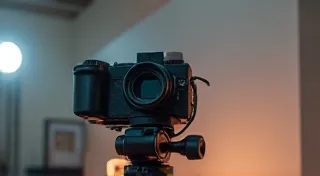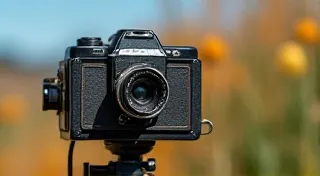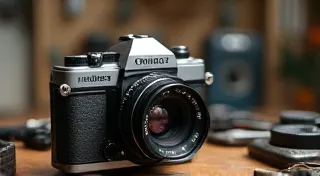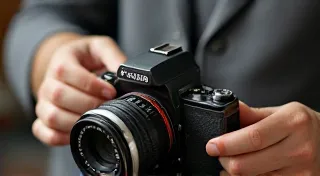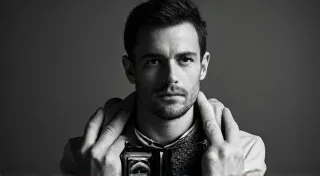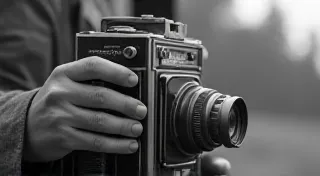Chromatic Aberrations of Time: A Lens Through Which Collecting Reveals Our Changing Aesthetics
There’s a quiet thrill that accompanies the turning of a century-old camera’s shutter. It’s not just the mechanics, the satisfying click and whir of gears, but the echo of a life lived, a moment captured, a perspective shaped by a world vastly different from our own. Collecting antique cameras isn’t merely amassing relics; it's traversing a landscape of shifting aesthetics, a tangible record of how we’s seen ourselves and the world around us through the viewfinder.
My own journey began with a box at a flea market. Inside, nestled amongst tarnished silverware and chipped porcelain, lay a Kodak Brownie box camera. Its simple, almost unassuming design belied a profound legacy: the democratization of photography. The Brownie, launched in 1900, brought photography to the masses, shattering the notion that capturing an image was solely the domain of professionals. Suddenly, ordinary people could document their lives, their families, their vacations – creating a visual narrative for generations to come.
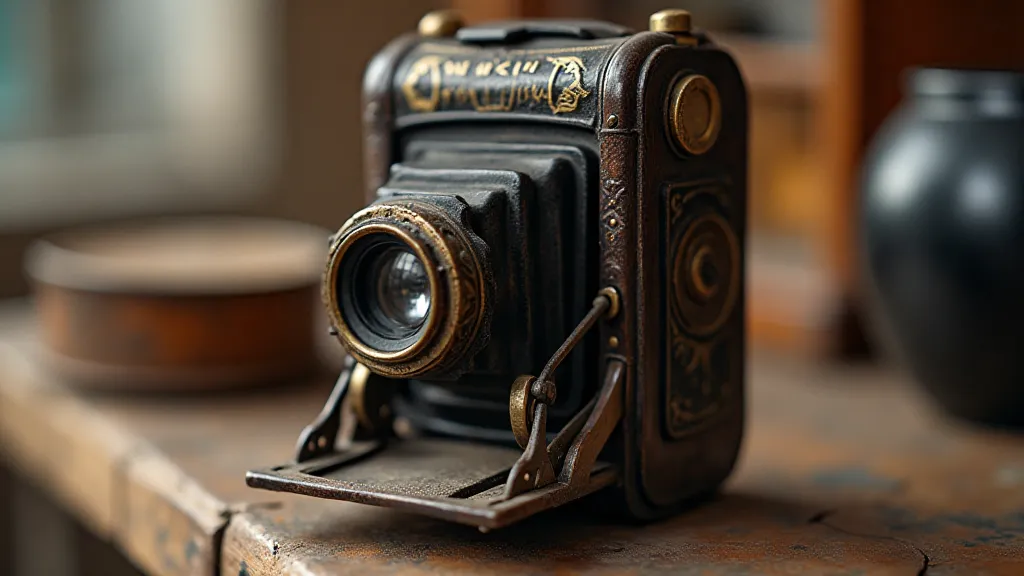
The Victorian Era: Sentimentality and the Daguerreotype’s Promise
Before the Brownie’s ease of use, the Victorian era presented a more formal and deliberate approach to photography. The Daguerreotype, the earliest commercially successful photographic process, demanded an extended exposure time and a skilled practitioner. These weren’t casual snapshots; they were meticulously posed portraits, often capturing a sense of profound sentimentality and loss, reflecting the era’s high mortality rates and romantic fascination with the ephemeral nature of life. The heavy, ornate cases encasing Daguerreotypes were as much a part of the artwork as the image itself, signifying the value placed on both the portrait and the memory it preserved. To delve deeper into this revolutionary process, consider reading about the Daguerreotype: A Pioneer in Photography.
Consider the elaborate hairstyles, the somber clothing, the carefully arranged backdrops—all contributing to a visual language designed to convey respectability, social standing, and a quiet dignity. The slow process of creating a Daguerreotype also encouraged a formality that is strikingly different from the candid, spontaneous photography we take for granted today. It was an event, a ceremony, a moment frozen in time with immense care. This period saw a fascination with capturing a perfect likeness, a desire to immortalize loved ones in a way never before possible. The sheer technological hurdle overcome to achieve such a result truly highlights the era's ingenuity.
The Rise of the Folding Camera: Portable Portraits and Travel Documents
As photographic technology evolved, so did the aesthetics associated with it. The late 19th and early 20th centuries witnessed the rise of the folding camera, offering portability and a degree of convenience previously unavailable. Companies like Eastman Kodak (again) and Bausch & Lomb led the charge, producing models that were increasingly compact and user-friendly. This portability coincided with a rise in travel and leisure activities, and cameras became essential tools for documenting those experiences. Suddenly, families were capturing vacation landscapes and documenting their adventures, creating visual souvenirs of a life expanding beyond the confines of their homes.
The aesthetics shifted subtly. While formality remained, there was a growing desire to capture movement, to depict scenes of everyday life, and to document the changing landscape. The advent of roll film, replacing cumbersome glass plates, further fueled this trend, paving the way for the snapshot revolution that would soon follow. The shift from carefully posed portraits to more casual scenes reflected a changing social landscape – a yearning for freedom and a desire to record the vibrancy of a rapidly modernizing world.
The Interwar Years: Art Deco and the Streamlined Aesthetic
The Art Deco period, spanning the 1920s and 1930s, injected a new exuberance into camera design. Gone were the heavy, ornate designs of the Victorian era. In their place emerged sleek, streamlined forms, inspired by the burgeoning aviation industry and the machine age. Cameras like the Leica and the Rolleiflex embodied this new aesthetic, showcasing a blend of engineering precision and artistic flair.
The focus wasn't just on functionality; it was on creating objects of beauty. Polished chrome, intricate engravings, and luxurious leather coverings were common features, reflecting a sense of optimism and prosperity. The photographic styles of the era mirrored this trend, with a greater emphasis on composition, lighting, and a sense of sophisticated elegance. The desire was to capture not just the subject, but the feeling, the atmosphere, the mood of the moment. This period saw the rise of photojournalism, using cameras to document the world with a sense of urgency and artistic vision. The limited production runs during this era also contributed to the fascinating history of camera collecting, creating a silent dialogue among enthusiasts who seek to understand the narratives embedded within each unique model.
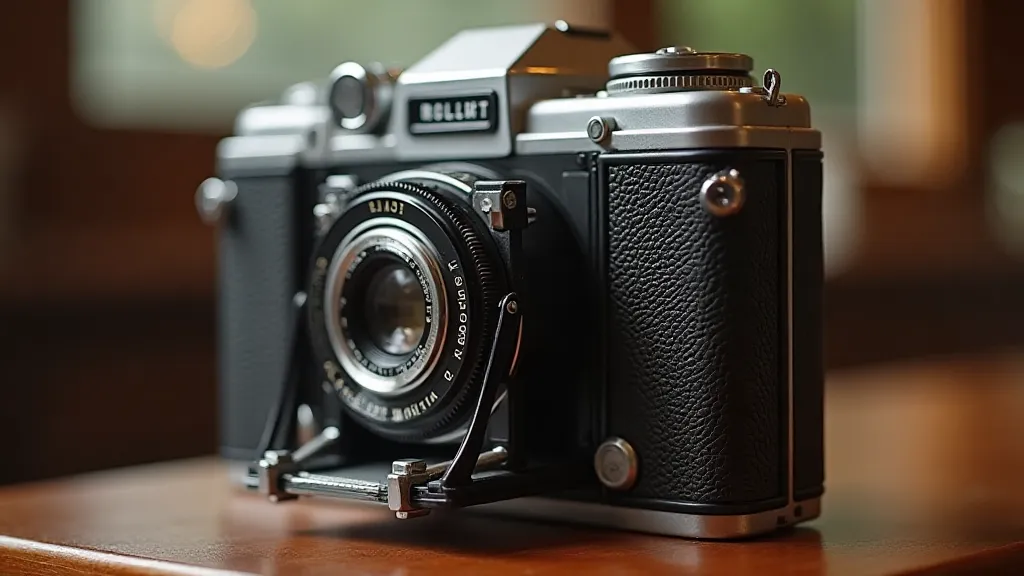
Post-War Photography: The Rise of the Single Lens Reflex (SLR) and a Move Toward Realism
The post-war years brought further technological advancements, most notably the rise of the SLR. SLRs offered photographers greater control over depth of field and allowed for interchangeable lenses, enabling a wider range of creative possibilities. This era also saw a shift toward a more realistic and documentary style of photography, reflecting a desire to capture the world as it truly was.
While artistic expression remained important, there was a greater emphasis on authenticity and social commentary. Cameras became tools for documenting war, poverty, and social injustice. The aesthetic shifted again, embracing a grittier, more unflinching view of the world. The focus wasn's so much on elegance or refinement, but on truth and impact. The simple act of documenting something, anything, became a form of protest, of connection. The evolution of these machines also allowed photographers to capture moments and perspectives previously unimaginable, leading to a deeper understanding of the human condition and the challenges faced by communities around the globe.
Consider, too, the impact of these advancements on the world of photography itself. The ability to document events with greater accuracy and speed transformed journalism and art. It provided a vital record of our shared history, allowing future generations to connect with the past in a tangible and powerful way.
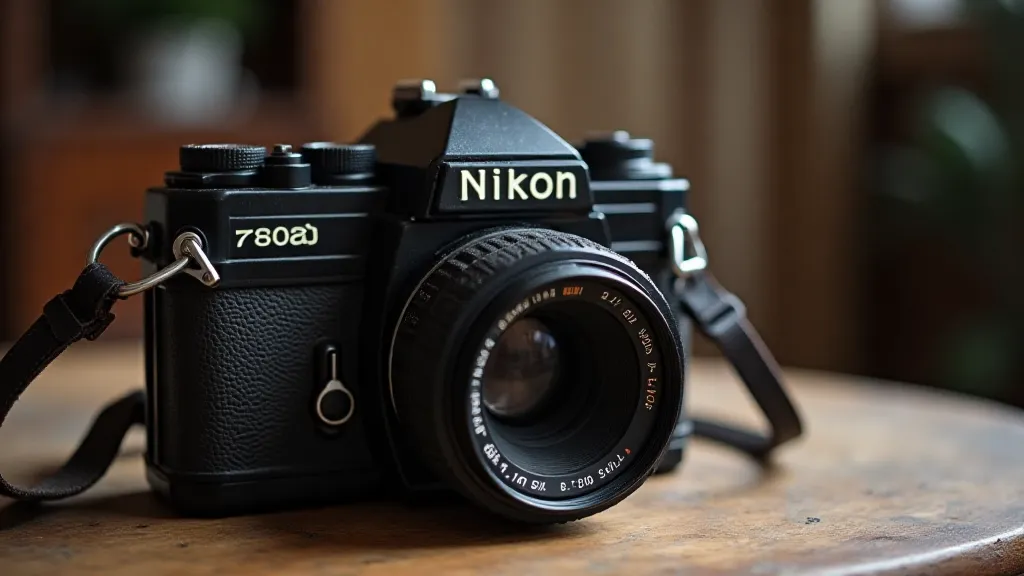
Looking at antique cameras isn't just about appreciating the mechanical ingenuity; it’s about understanding the cultural forces that shaped their design and use. Each camera tells a story, not just about the technology of its time, but about the values, aspirations, and anxieties of the people who wielded it. It is a tangible record of how we have, over generations, learned to see—and to be seen—through a lens. The chromatic aberrations aren’t flaws, but rather windows – windows into a past continually shaping our present. The history of photography is intertwined with the history of art, science, and society – a complex and fascinating tapestry that continues to evolve with each passing year. The choices made by manufacturers and users alike have left an indelible mark on the visual landscape, shaping our understanding of the world and our place within it. And, of course, the individuals who wielded these machines have left their own unique marks, contributing to a rich and diverse legacy of photographic innovation. To fully appreciate this legacy, one must consider the famous photographers and their favorite antique cameras, learning from their techniques and perspectives.
